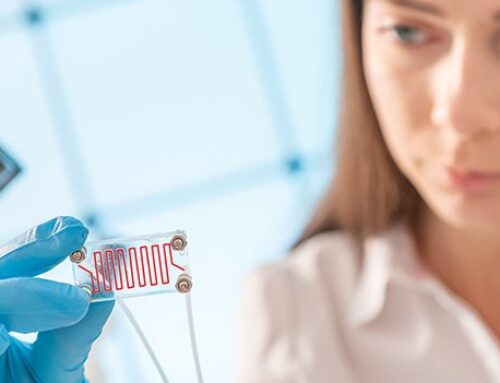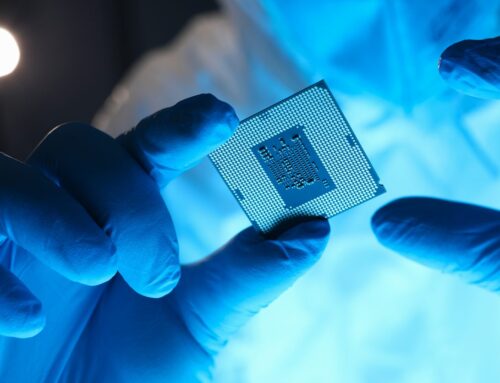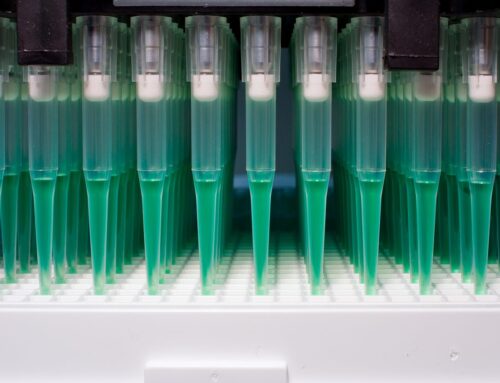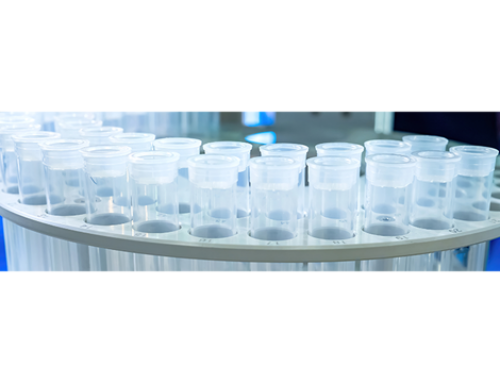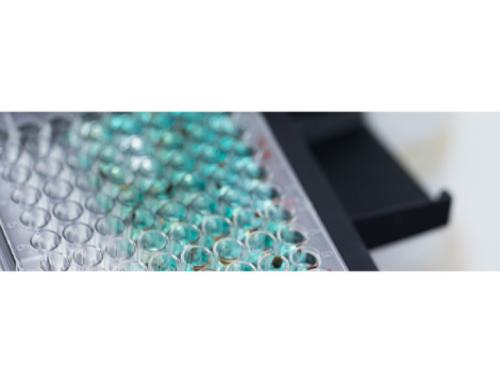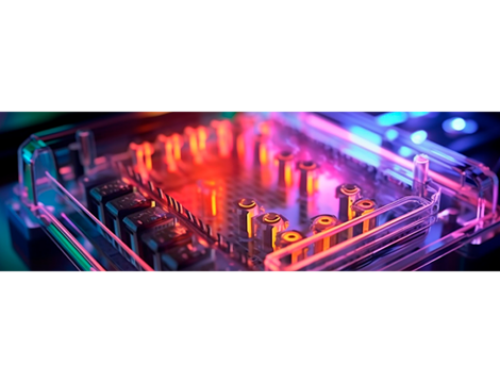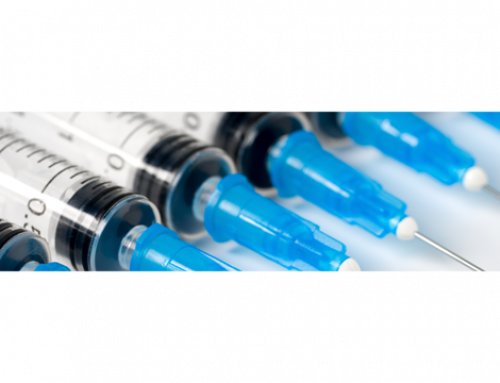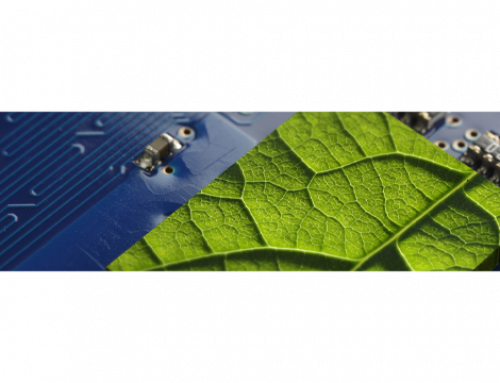From biosensing pathogens in agri-food to detecting and suppressing COVID-19 severity to diagnosing cancer biomarkers, lab-on-chip devices are revolutionizing analytical and diagnostic techniques throughout human healthcare, veterinary medicine, food quality testing, environmental testing, and more.
Groundbreaking new applications for lab-on-chip technology, from performing lifesaving point-of-care testing in rural clinics around the globe to improving the detection of contaminants in air, soil, and water to analyzing how drugs interact with organ mechanisms, are being discovered and developed all the time, driven by new innovations in product development.
The lab-on-chip product development process is ever-evolving, and thanks to innovations in designing, prototyping, and producing microfluidic chips, LOC developers and manufacturers are finding solutions to common challenges in designing LOC devices for manufacturing and assembly.
Applications of Lab-on-Chip Devices
Utilizing microfluidic principles to integrate the functions of large-scale analytical laboratory equipment into small-scale platforms, lab-on-chip technology is leading the way in developing cost-effective, portable, sustainable tools for medical diagnostics, environmental monitoring, drug discovery, and other application in a wide range of scientific market sectors and research fields.
Medical Diagnostics and Point-of-Care Testing
- Rapid detection of infectious diseases such as influenza, HIV, and COVID-19
- Monitoring of chronic diseases through biomarker analysis
- Blood analysis for glucose levels, cholesterol, and other parameters
- Detection of cancer markers for early diagnosis
- Allergy testing and personalized medicine
- Antibiotic treatment planning and efficacy titration
Environmental monitoring and analysis
- Detection of pollutants in air, water, and soil samples
- Analysis of heavy metals and toxins in environmental samples
- Monitoring of water quality and pathogens in drinking water
- Detection of pesticides and herbicides in agriculture
- On-site analysis of contaminants in industrial settings
Drug discovery and development
- High-throughput screening of potential drug candidates
- Analysis of drug metabolism and pharmacokinetics
- Evaluation of drug toxicity and safety profiling
- Monitoring of drug release from formulations
- Study of drug interactions with cellular and tissue models
DNA Sequencing and Genomics
- Rapid DNA sequencing for genotyping and mutation analysis
- Detection of genetic markers for disease risk assessment
- Analysis of gene expression and regulation
- Identification of microbial pathogens and antibiotic resistance genes
- Personalized medicine and genetic profiling for precision healthcare
Chemical Synthesis and Analysis
- Miniaturized chemical reactions and synthesis of small molecules
- Optimization of reaction conditions and catalyst screening
- Analysis of chemical composition and purity of samples
- Monitoring of reaction kinetics and product yields
- On-chip spectroscopy for molecular analysis and characterization
Challenges and Risks in the Lab-On-Chip Product Development Process
When it comes to lab-on-chip product development, finding a market need that a new LOC device can fill is the first and easiest step in the process. From then on, the process of discovering a microfluidic chip design that addresses this market need and guiding it through iterations of prototypes to develop a product that is optimized for not only functionality but manufacturability and commercialization as well is a challenging and often frustrating process fraught with risk.
Challenges in LOC Product Development
Developing lab-on-chip devices isn’t easy. Challenges throughout the product development process include:
Integrating a Variety of LOC Functions
The beauty of lab-on-chip devices is their ability to condense large-scale analytical tools and equipment into a single tiny chip, but that is also one of the primary challenges of microfluidics product design.
Seamlessly integrating sample preparation, mixing, separation, detection, and other laboratory processes into a miniaturized platform—while maintaining reliability and performance—often requires a long period of trial-and-error design iteration.
Selecting Fluidic Control and Manipulation Techniques
Precisely controlling fluid flow at the micro level is paramount to reliable, accurate LOC performance, and research is constantly ongoing to overcome the factors that exert greater influence over the flow of minuscule amounts of liquid, such as surface tension, capillary forces, and channel clogging. Fluid dynamics behave differently at this scale!
Ensuring Sensitivity and Specificity of Detection
Selecting the right materials and bonding techniques, as well as integrating effective detection mechanisms such as optical, electrochemical, or biological sensors, to ensure accurate and reliable diagnostics often throws many curveballs throughout the complicated LOC product design process.
Meeting Regulatory Considerations
Navigating the regulatory landscape of your scientific or industrial field and ensuring compliance for the design, functionality, and reliability of your LOC design can be time-consuming and resource-intensive.
Optimizing for Manufacturing Scalability and Cost-Effectiveness
Designing LOC devices for manufacturing and assembly is an easy challenge to overlook in the lab-on-chip product development process—until it’s impossible to ignore. When you have the perfect design for functionality but realize that scaling up from lab-scale prototypes to large-scale manufacturing will cost far more in materials and labor than is sustainable, it means going back to the drawing board and figuring out how to create a more manufacturable design without sacrificing utility in the field.
Our free Microfluidic Chip Design Guide offers DFMA (Design For Manufacturing and Assembly) guidance to help you streamline your lab-on-chip product development process. By focusing on efficiently designing and engineering your product early on using DFMA principles, you save on manufacturing costs and mitigate the time and labor costs of dealing with design inefficiencies early on:
Risks in LOC Product Development
Lab-on-chip device production is fraught with risks. Undergoing the time-consuming, costly, and uncertain processes of obtaining approvals and meeting regulatory standards from agencies such as the FDA, navigating the complicated landscape of intellectual property protection to avoid infringing on existing patents and protect your own IP, and undertaking the potentially costly risks of scaling production can end up severely derailing your plans for market entry before you even get your train on the track.
Beyond that, there are risks in introducing your new product to the market, communicating its value proposition, and ultimately achieving a return on the costly investments in research, development, prototyping, manufacturing, and marketing that lab-on-chip product development requires.
All this risk can make the decision to begin work on a groundbreaking new lab-on-chip device difficult to commit to in the first place. Fortunately, collaborating with a Strategic Partner for development and manufacturing is an effective strategy for mitigating these risks and vastly improving your chances of reaping ROI from your ideas for lab-on-chip products.
De-Risking Lab-On-Chip Product Development Through Strategic Partnerships
The world of microfluidic chips and lab-on-chip devices is in constant flux—from chemically modified carbon nanotubes and other functional nanomaterials to new embossing techniques to possible opportunities to integrate emerging machine learning technologies throughout the design process, the future of lab-on-chip product development is bright indeed.
The many benefits of strategic partnership for microfluidic chip development and manufacturing include taking advantage of expert engineers dedicated to remaining on the cutting-edge of lab-on-chip product development and providing a cost-effective means to taking advantage of the latest developments in LOC design.
Strategic partners leverage interdisciplinary expertise in engineering, research, and product development and distribution logistics to decrease upfront costs, smooth out rocky design and development paths, and mitigate financial and economic risks in bringing a product to market.
At Vantiva Precision BioDevices, we provide strategic partnerships for microfluidics manufacturing and design, helping customers around the world streamline and de-risk their development of new and innovative lab-on-chip devices. Whatever your idea, however far you are along in the product design stage, we’re dedicated to bringing it to life.
Contact us today to find out what our strategic manufacturing and design capabilities can do for you:

